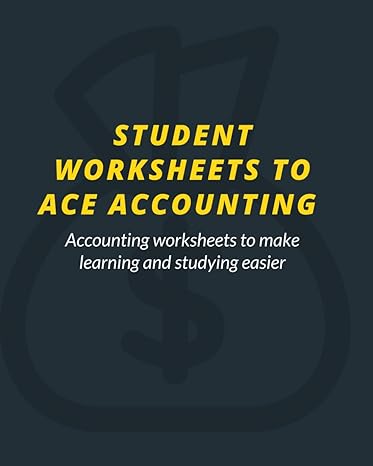Answered step by step
Verified Expert Solution
Question
1 Approved Answer
Balance Sheets as of December 31 current assets 2012 2011 cash $16000 $12000 marketable securities 20000 6000 accounts receivable (net) 54000 46000 inventories 135000 143000
Balance Sheets as of December 31 current assets 2012 2011 cash $16000 $12000 marketable securities 20000 6000 accounts receivable (net) 54000 46000 inventories 135000 143000 prepaid items 25000 10000 total current assets 250000 217000 investments 27000 20000 plant (net) 270000 255000 land 29000 24000 total assets 576000 516000 Liabilities and Stockholders' equity liabilities current liabilities notes payable 17000 6000 accounts payable 113800 100000 salaries payable 21000 15000 total current liabilities 151800 121000 noncurrent liabilities bonds payable 100000 100000 other 32000 27000 total noncurrent liabilities 132000 127000 total liabilities 283800 248000 stockholders' equity preferred stock, par value $10, 4% cumulative, non-participating; 8000 shares authorized and issued 80000 80000 common stock, no par; 50000 shares authorized; 10000shares issued 80000 80000 retained earnings 132200 108000 total stockholders equity 292200 268000 total liabilities and stockholders' equity 576000 516000 statement of income and retained earnings for the years ended December 31 2012 2011 revenues sales (net) 230000 210000 other revenues 8000 5000 total revenues 238000 215000 expenses cost of goods sold 120000 103000 selling, general, administartive expenses 55000 50000 interest expense 8000 72000 income tax expense 23000 22000 total expenses 206000 182200 net earnings (net income) 32000 32800 retained earnings, January 1 108000 83000 less:preferred stock dividends 2800 2800 common stock dividends 5000 5000 retained earnings, December 31 132200 108000 Required: use the financial statement to calculate the following for BOTH 2012 and 2011 a.) working capital b.) current ratio c.) quick ratio d.) accounts receivable turnover (beginning inventory at January 1, 2011 was $47000 e.) average number of days to collect accounts receivable f.) inventory turnover (beginning inventory at January 1, 2011 was $140000 g.) average number of days to sell inventory h.) debt to assets ratio i.) debt to equity ratio j.) times interest earned k.) plant assets to long-term debt l.) net margin m.) asset turnover n.) return on investment o.) return on equity p.) earnings per share q.) book value per share of common stock r.) price-earnings ratio (market price per share: 2011, $11.75; 2012, $12.50 s.) dividend yield on common stock
Step by Step Solution
There are 3 Steps involved in it
Step: 1

Get Instant Access to Expert-Tailored Solutions
See step-by-step solutions with expert insights and AI powered tools for academic success
Step: 2

Step: 3

Ace Your Homework with AI
Get the answers you need in no time with our AI-driven, step-by-step assistance
Get Started


